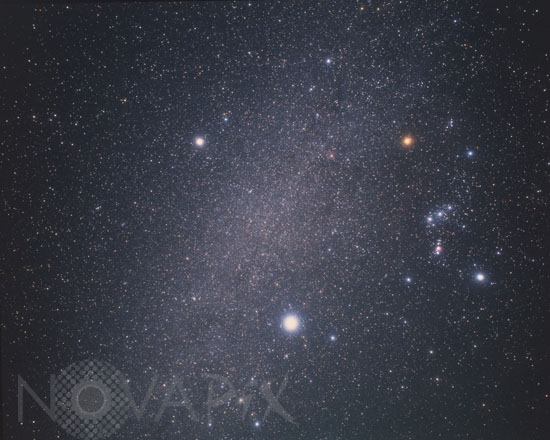Photo Agency - Astronomy - Space - Nature

Constellations of Monoceros and Canis Minor
author: A.Fujii/David Malin Images/Novapix
reference: a-cst46-00003
Image Size 300 DPI: 51 * 40 cm
Monoceros constellation, at right: Orion, top left Canis Minor with Procyon, bottom Sirius in Canis Major. Monoceros (the Unicorn) represents mythical creature set among the stars. This one has the forelegs and (horned) head of a horse, the hindquarters of a stag and the tail of a lion. Such creatures are sometimes seen in Assyrian (~2500-600 BCE) carvings, and have been interpreted as originating in traveller's tales of the Indian or African rhinoceros. The modern constellation sits astride both the Milky Way and the celestial equator. It is also enclosed on three sides by the bright stars of the Winter Triangle (Sirius, Procyon and Betelgeuse). Of course this refers to the northern hemisphere winter; these stars are equally visible in the southern summer and make Monoceros easy to find. However, the stars within the constellation itself are rather faint, though they can be joined tp produce a figure resembling a unicorn. The famous Rosette nebula is just visible in the only closed triangle of the constellation figure. Canis Minor (the Lesser Dog) is sometimes regarded as the smaller of the two dogs of Orion the hunter. It is minor indeed, just 185 degrees square, and 71st in size of the 88 modern constellations. The most obvious and interesting object Canis Minor is its principal star, the pale yellow Procyon. Its name is from the Greek, meaning 'before the dog', since it rises before the Sirius, the Dog Star.
Contact : Stéphane Aubin +33-(0)9-51-26-53-76
© Novapix - All rights reserved


